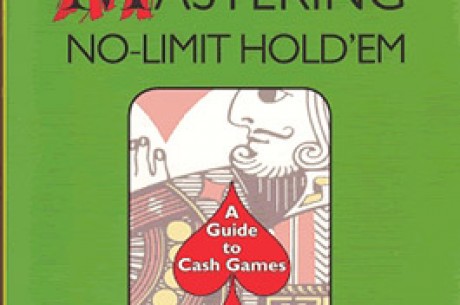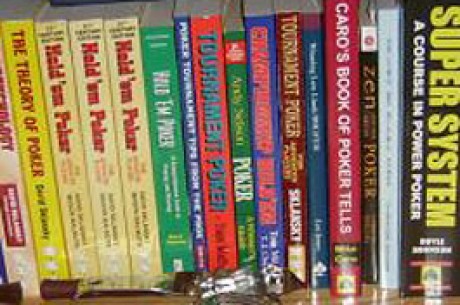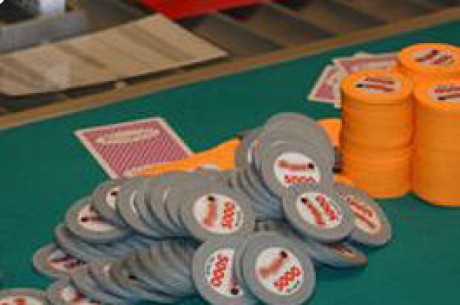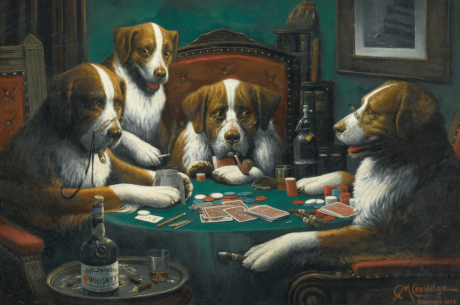'All In': A Historical Look At The World Series of Poker

With the multitude of poker books out there, it is surprising that more of them haven't focused on the greatest poker tournament in the world, the $10,000 Championship Event of the World Series of Poker. While Jim McManus eloquently gathered together his experience from the 2000 Final Table in the legendary "Positively Fifth Street", there hasn't been a tremendous outpouring of works on the tournament itself or, to be more precise, a chronological history of the event itself. That has been changed with "All In: The (Almost) Entirely True Story of the World Series of Poker".
Written by Jonathan Grotenstein (who collaborated with Phil Gordon on "The Real Deal") and Storms Reback and available at your local bookstore for $24.95 U. S. ($33.95 Canadian), "All In" takes on the audacious task of chronicling the entire history of the World Series up to the 2005 event. It doesn't just take a look at the Championship Event (although it is the focal point of the book), it also delves into the entirety of the "hows" and "whys" of the World Series all the way back to its originator, the late Benny Binion.
As surely any poker fan or player knows, Binion originated the idea for the World Series in 1970, after a convention of poker players the year before in Reno, NV. When he learned that there wasn't to be a convention the following year Binion, ever the entrepreneur, seized upon the idea as a way to bring his old friends together for some cards and to promote the Binion's Horseshoe Casino. >From such small seeds did a mighty oak grow; in 2005, the tournament had almost as much in purses as the previous thirty four years had generated and the "World Champion" (the player who takes the $10,000 Championship Event) went from a vote among the competitors to an eleven day battle of survival featuring over 5,500 contestants.
Grotenstein and Reback have shown their love and devotion to the game of poker by digging up every nugget of information possible to give the best historical reference of the World Series that is available today (there are fifteen pages of bibliographical information used to make up the content of the book). They have gone back to that original gathering and follow, in a linear mode, the evolution of the tournament from those simple origins to the multi-faceted worldwide event that it has become. They accurately point out, for example, that at the 2003 gathering only sixty three players paid the full $10,000 buy in, with the rest made up of the World Series-inspired invention called the satellite tournament (either online or in the casino). It is a tribute to their tenacity to unearth some of the additional information that they have come up with for the book.
Along the way, Grotenstein and Reback have also told of the evolution of poker itself with their story. From the days when the World Series was the only game in town to today's high profile and hectic tournament trail, they have told of the backroom deals, the personalities and the action, both good and bad, that the World Series has wrought. They have also recognized that without the players, there would be no World Series; the book is liberally peppered with commentary and anecdotes from the legends of the game (whether at the tables or not), which add a great deal of authority to "All In".
Perhaps the only downside with the book is in the lack of retelling of action of the early years of the World Series. This, however, is a forgivable omission. Grotenstein and Reback accurately point out that solid information, from hand play to, in some cases, even the participants, from the early years were not kept, as the World Series in those days was almost a year to year event and not the calendar marking occasion it is today. "All In", even with the omission of the first couple of years of records, accurately recounts the final table action from the third year of the event through 2004 and serves as an excellent reference for the poker historian in all of us.
The book is never boring and offers a glimpse into the way the World Series and, in many ways, poker was a short quarter century or so ago. With "All In", Grotenstein and Reback have given poker players a tome that accurately and stylishly depicts the history of the greatest poker tournament on earth. Anyone who considers themselves a fan of poker or a "poker historian" must have this book and, at some point in or around the 50th anniversary of the World Series, it would be a treat to see a revised edition of "All In: The (Almost) Entirely True Story of the World Series of Poker"!
Ed note: Go 'All In' and go to the WSOP courtesy of PokerNews at Hollywood Poker








